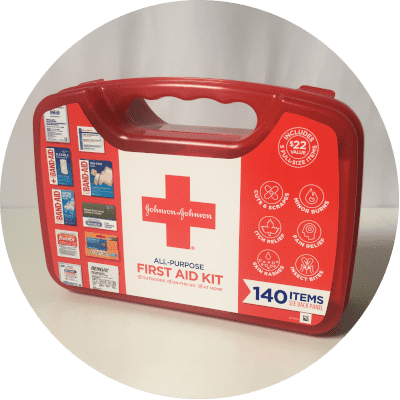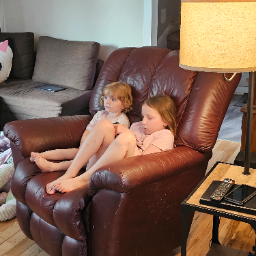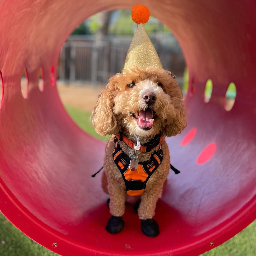How to Babysit a Baby (The Beginner’s Guide + Video)


Written & Illustrated by
Matthew James Taylor
Kidsit Founder, General Manager

Babysitting Video by
Lydia Kutz
Babysitter, Infant Swimming Resources Instructor

Medically Reviewed by
Gina Maria Jansheski, MD, FAAP
Board-Certified Pediatrician, Medical Reviewer
Key Takeaways
- Babysitting a baby means meeting their every need - feeding, burping, diaper changes, sleep, and emotional care.
- Always follow the parents’ instructions closely - routines, feeding protocols, sensitivities, and house rules.
- Safety is nonnegotiable: never leave the baby unattended, support the head and neck, and avoid hazards.
- Learn to read early cues (hunger, tiredness, discomfort) before full cries take over.
- Be patient, flexible, and calm - babies don’t follow plans exactly and will need your soothing presence.
Babies are terrifying.
Ok, maybe not all the time. Often you’ll see them cooing, laughing, and playing. They look adorable and squishy. They give the impression that life itself is purely fascinating and joyful.
Until it isn’t.
When you can’t just hand the baby back to its parents, you’re on your own. Babysitting a baby is no joke.
It doesn’t have to be so stressful, though. Usually, the hardest part of caring for a baby is not knowing what to do. In this guide, I’ll help you recognize what you need to do to pull this off like a pro.
Kidsit babysitting statistics
67.07% of babysitters can work with babies (3 - 12 months), and 45.57% can work with newborn babies (0 - 2 months).
(Babysitting statistics calculated weekly from our live member data — Updated 11 Jan 2026)
So, how do you babysit a baby? To babysit a baby, you’ll need to attend to their every need. Typically, you will be responsible for entertaining, feeding, burping, changing, and keeping the baby safe at all times, which is basically everything.
Even if you don’t have a lot of experience, you’ll be able to use the following tricks to look like you’ve been doing it for ages. This will also give you an opportunity to think about whether or not you’re up for the task. The point of this article is to make sure you’re 100%, fully, completely, and entirely prepared to babysit a baby!
Lydia has been working in the childcare industry for 15 years, and owned a childcare agency in Florida, USA for 7 years. In this video she shows some of her favorite methods for entertaining a 9-month-old baby.
Why is Babysitting a Baby Hard?
Babies are needy, and they can’t talk. A skilled mother will learn her baby’s behavior and be able to interpret and predict their needs. Even still, a new mother needs to learn how to take care of her child; it doesn’t all come naturally. So it is way harder for a babysitter.
Taking care of a baby is completely different from babysitting a toddler or small child. Their bodies function differently, and babies need waaay more attention. It’s not just a matter of kisses and cuddles. They are 100% dependent on you as their caregiver, and they’ll let you know when you’re not doing a good job.
These things can’t actually be raised by wolves.
What are a Baby’s Needs?
With babies, some things happen automatically, and some need coaxing. There is no dictating a baby’s actions, either. You’re there to serve them, regardless of what they need and how hard it is.
Essentially, there are five things that a baby will need you for: feeding, burping, changing, getting to sleep, and giving attention.
Sometimes the baby can manage one or two of these things on their own. For example, the baby might fall asleep without intervention, and burps might work their own way up. Often, though, they need help — a lot of help.
Let’s go over these needs so you can understand why babies are so...needy.
Food
This seems pretty straightforward, right? Babies need food, and they can’t feed themselves. Therefore, you must feed them.
There are some essential things to know about this, though. For example, there are a few foods and drinks that you should under no circumstances give to a baby.
Most doctors recommend that solid foods should not be given to a baby until 4 to 6 months of age (source). This includes soft foods like mashed bananas and other fruit. Keep in mind, though, that when you’re watching someone else’s kid, you need to play by their rules. If they don’t give the baby solids, neither should you. If the child is 6 years old and still on breastmilk, deal with it.
Just do whatever the parents say.
Even when the baby is over 6 months old, there are still some foods to watch out for. For example, honey should never be given to babies under one year of age due to the risk of poisoning caused by Clostridium botulinum spores (infant botulism) (source). However, these spores are not harmful to those over 1 year of age, since they have the ability to move them through the intestine before the toxin is made.
Here’s a quick list of examples of food and drinks along with recommendations:
- Honey (do not give under 1 year)
- Cow’s milk or any alternative milk (do not give under 1 year)
- Fruit juice (do not give under 1 year, then minimize consumption)
- Refined grains, aka white grains like in bread (do not give under 1 year)
- Candy (do not give under 1 year, then minimize consumption)
- Unpasteurized foods, including cheeses or other animal products (not recommended)
- Smoked or cured meats (not recommended) (source)
- Allergenic foods like peanuts, eggs, wheat, strawberries, and tomatoes (do not give under 6 months)
- Fish that can contain mercury (minimize consumption) (source)(source)
- Chocolate (do not give under 1 year)
This isn’t an exhaustive list, and some of these items are more of a problem than others. The thing to remember here is that you need to be conscious of what you give the baby.
Remember, you need to consult with the baby’s parents on this. You may wish to print out the list and ask about each item. They’re the final authority, not you.
Read our complete guide on food safety for babysitters.
Burping
Some babies need to burp a lot, others hardly do. It’s kind of the same thing with grownups.
A general rule of thumb is that bottle-fed babies need to burp more than breastfed babies. This is because bottle-fed babies tend to swallow more air when feeding from the bottle, as it comes out more quickly and can easily be mixed with air. Ultimately, though, every baby is different. Some can work out their burps mostly on their own, and others need help.
Changing
Babies usually don’t like poop in their diapers any more than you do. Obviously, this isn’t something that they can handle on their own. As a babysitter, you’ll have to be up for the task.
Sometimes this is straightforward and tidy; other times, it’s a downright explosion. You need to be able to handle yourself in the face of imminent danger — more on this in a bit.
Sleep
Some babies fall asleep at the drop of a hat. Other babies fight it ‘till the last minute, screaming vicious war cries until they collapse.
Never underestimate the need for a nap schedule. It’s easy to make the mistake of thinking that the baby “looks fine,” but you’ll never know until it’s too late. Just stick to the schedule and don’t question it, for everyone’s sake.
For some of the best sleeping tips, I highly recommend you read our article, how to get kids to sleep while babysitting.
Attention
It shouldn’t come as a surprise that babies love interaction. Their brains are spongy blobs of gray fat that soak up everything in their environment.
The cool thing about playing with babies is that they’ll be wiped in no time. Play hard, nap hard.
How to Tell What a Baby Needs
This is where it gets tricky. The baby starts fussing, and you need to figure out what’s wrong. Put on your Sherlock gear, super sleuth, ‘cuz here are the clues you’re looking for:
Listen to the baby before it starts to cry. Most babies will make a similar sound based on their needs. There’s actually a whole theory about this called the Dunstan Baby Language, and it’s especially effective for babies 0–3 months of age (source). Here are some examples of what to listen for before the baby actually starts crying:
- “neh,” made from a sucking motion like when a baby is nursing — the baby is hungry.
- “owh,” almost like the start of a yawn — the baby is tired.
- “heh” discomfort — the baby might be stressed. This could come from a full diaper.
- “eairh,” a grunting or pushing sound — the baby’s gut hurts. It could have to poop, fart, or have an upset stomach. Try firmly but gently pushing the baby’s knees up to its belly one at a time like it’s riding a bicycle. It’ll help get the nasty stuff out, and the baby will smile in relief when you save the day.
- “eh,” a short sound — this is when the baby is trying to release a burp. Help the poor kid out.
This method isn’t scientifically proven, but a lot of parents swear by it. The key is to listen closely to what sounds the baby makes before crying. Once the baby is screaming at the top of its lungs, you’re on your own.
If this doesn’t work, just run through the checks.
- Check diaper
- Play with the baby
- Try feeding the baby (might take a few tries)
- Burp the baby (patience also required)
- Do the bicycle pumps
- Hold and walk around with the baby
- Try to put the baby to sleep
If nothing seems to be working, check the baby’s temperature with a thermometer. The baby might be feeling sick.
One tip to watch out for to tell if a baby is tired:
When a baby is exhausted, it will likely flail around a bit. The same is true for toddlers. This is very different from grownups, who will usually just get sleepy and not want to do much. With babies and toddlers, you’ll see them crying and flapping their arms and legs. It kinda looks like they’re hyperactive.
If you don’t get them to bed ASAP, you’ll be in for it. The next stage is a complete meltdown, along with possible psychotic breaks and delirium.
How to Take Care of a Baby
This can be totally overwhelming, so it might be a good idea to watch the baby for a short amount of time first. Maybe keep your first couple of babysitting gigs under an hour or two until you get some experience and feel comfortable. Maybe even try visiting when the parents are home so you can have a backup in case you run into any problems.
Here are some tips to help you care for the baby’s needs:
How to Feed a Baby
If you’re feeding a baby with a bottle, you need to be patient. And if the baby is only a few months old, you’re going to need a bit of skill.
Step 1
Warm up the breastmilk or formula (See our handy guide to making baby formula). You don’t want it to be hot. It should be just about body temperature. That’s the temperature it comes in naturally, after all.
That’s why you’ll see parents checking it on the inside of their wrist; it’s a sensitive area, so you can tell if it’s the right temperature. Make sure you swirl it around a bit first to distribute the warmer sections before you test it. You want it to not be cold or hot - it should feel about the same temperature as your skin. This usually takes only a few minutes.
Safety tip: don’t heat the milk in a microwave. Microwaves heat substances unevenly, which can lead to hot spots that can burn the baby’s mouth. The best way to warm up milk is to run the bottle under or place it in a bowl of warm tap water. Swirl it before testing and feeding. (video)
Step 2
Sometimes the baby already knows what to do with the bottle. Often, though, you need to coax it a bit. Brush the nipple of the bottle gently back and forth across the baby’s lips. When the baby opens its mouth super wide, gently slip it in there. Sometimes you just gotta be sneaky.
Step 3
Don’t force any baby to eat if it doesn’t want to. If the baby isn’t really drinking and it keeps spitting out the bottle, then it probably isn’t hungry. Or, if after several minutes of trying to get it to latch on you are unsuccessful, admit defeat, and move on to trying something else.
It might also be that the baby is hungry, but there’s another pressing issue. The baby might refuse milk until the bigger issue is resolved, so revisit feeding attempts once the baby is calm.
How to Burp a Baby
This involves more than just patting a baby’s back. Sometimes you really need to work to get these things out, but always pat gently.
Put the baby over your shoulder really high, so that the baby’s tummy is being firmly pressed against you. This extra pressure will help work these burps out. If there’s no action after a few minutes, try a different position. Maybe something like bicycle pumps with the baby on your lap will work better. Or try putting the baby on one side and pat its back.
Keep moving the baby around and changing the position every few minutes. Getting burps out is a team effort. With some babies, the burps are really stubborn! Be patient, and keep working. Eventually, they’ll come out, and the baby will feel relieved —and so will you.
How to Change a Baby
Ok, this is one that needs a bit of practice. The easiest way is just to get someone to show you. But here are some tips to help you out:
- Get everything ready beforehand, and keep it within reach. You don’t want to be searching for wipes once the nastiness has been unleashed, and the baby is wriggling in it.
- Be gentle but firm. Babies love to move, especially when they see you making gagging faces at them. You can use moderate pressure to keep them in place.
- If it’s a boy, tuck the fire hose down. Otherwise, you’ll probably get soaked when you least expect it.
- Always wash your hands after changing a baby.
See our complete guide to changing diapers which has everything that babysitters need to know!
How to Put a Baby to Sleep
This is truly an art to master. Don’t expect it to go smoothly the first few times, unless you have a very easygoing baby. The best thing you can do is ask the parents how they put their bundle of screaming joy to sleep. But here are some tips to help you out:
Go into a dark room. Light keeps the mind active; darkness helps the brain release melatonin, which makes us sleepy.
Crank up the white noise. White noise is anything that drowns out other sounds. One trick that works great is to turn on a hairdryer to the max (on the cool setting and not in the crib!) and put the baby to sleep somewhere nearby.
Hold the baby on its side or stomach. This is often a really comfortable position for babies. Hold the baby’s head in your open hand and rock the baby side to side. If you get it just right, the baby’s head will gently sway back and forth in your hand, and it’ll be snoring gently in no time!
Important Safety Information
This is a super important section, read it carefully!
Back Sleeping Only!
The only safe sleeping position for a young baby is on its back (source) (source). It’s fine if the baby falls asleep in your arms tummy-down, but if the baby is in a crib, it needs to be on its back. Otherwise, there’s a risk of SIDS.
The jury’s still out on exactly why this is so dangerous. Some say that babies sleep so deeply that they won’t wake up if they stop breathing (sleep apnea). Others have proposed that the baby smothers when facing down on a blanket or soft surface. Regardless of the reason, it’s not considered safe for a baby to sleep on its tummy.
When you’re putting the baby in the crib, make sure there are no blankets or anything else in there that could suffocate it. If the baby is cold, add another onesie, not a blanket.
Watch Out for Choking Hazards
Choking is a real hazard for babies because their airways are still very small. They likely won’t be able to cough hard enough to dislodge anything that gets stuck. It’s up to you to make sure that anything they could choke on is well out of reach.
Here are a few common hazards to watch out for:
- Pen caps
- Dice
- Coins
- Marbles
- Bottle caps
- Buttons
- Batteries
- Hard candy
- Popcorn
According to the CDC, anything that’s small enough to fit through a 1-1/4-inch (3.1cm) circle and is under 2-1/4 inches (6 cm) in length is a choking hazard for children under 4 years old.
You’ll also want to be very careful with solid foods if the baby is old enough for them. Either mash or cut the food into very small pieces. Never give a baby whole grapes; cut them in half first.
Here are some other foods to keep away from the baby if it’s 0–12 months old:
- Uncooked dry fruit (like raisins)
- Cooked or raw whole corn kernels
- Uncut cherry or grape tomatoes
- Uncut pieces of fruit, including grapes, berries, cherries, or melon balls
- Large pieces of cheese, including string cheese
- Nuts, and nut butters
- Tough or large pieces of meat
- Hot dogs or sausages
- Fish with bones
- Cookies
- Granola bars
- Chips, pretzels, and snack foods
- Crackers and bread with seeds, whole grains, or nuts
- Whole cooked rice, barley, wheat, or other grains
- Any kind of hard or soft candy
- Gum
- Marshmallows
Yep, that’s a pretty long list, alright. The main thing to remember is not to feed the baby anything except food made specifically for babies, and to keep small objects far away from them.
Miscellaneous Safety Information
Here are a few other good-to-know tidbits:
- Be really careful around stairs or anywhere else the baby could fall. This includes leaving a child unattended on a changing table or anything similar. If the baby’s on the changing table, always have at least one hand on the baby. Babies can roll quickly, and it only takes a second.
- Never shake a baby or throw it up in the air. This could cause brain injuries, blindness, or worse. Babies are delicate, and you need to be very gentle with them.
- Do not give any water to a young baby that is not yet eating solid foods. The formula and breastmilk already contain enough water to sustain the baby. Extra water can lead to seizures.
- Don’t leave a baby alone with a young sibling or a pet, even when the baby is sleeping.
- Watch out for anything that a baby can pull on – tablecloths, electrical cords, etc.
- Do not put the baby to bed with a bottle.
- If you’re going to use a high chair or something similar, make sure the baby is buckled in firmly and correctly.
- Don’t dress a baby too warmly. A rule of thumb is to add one layer more than what you would need to feel comfortable.
- Don’t keep a baby in direct sunlight without protection. Their skin is super sensitive.
- Take a CPR class and make sure you learn how to perform it on a baby! (see my recommended babysitting courses)
Read our guide on how to be a safe babysitter for essential safety tips and advice.
If you're planning a full-time career in babysitting, you may consider getting nanny insurance, see our article: Do babysitters need insurance to learn if this is right for you.
What Age Is The Easiest To Babysit?
We polled our babysitters to find out:

Other Tips for Babysitting a Baby
It’s considerably more challenging to watch a baby for a long period of time than a toddler. The signals can be hard to read. Sometimes babies are a dream to take care of, and other times your hair will fall out from sheer stress.
- Ease yourself into it. Start off with one-hour gigs. Then two hours. Then three. Etcetera. This will help you build up your confidence and ability to take care of little people that can’t talk.
- Also, keep in mind that every baby is different. Just because you took care of your baby sister a time or two, it doesn’t mean that you’re able to handle a totally different baby on your own.
- Make sure that your babysitting bag is well stocked and includes all of the vital information. Babies are delicate, and they need close attention. Be ready to handle any medical emergency that could come up, except for open-heart surgery, that is. A doctor should do that one.
- Ask the parents where everything is before they leave. This includes things like onesies, burping cloths, etc. Babies spit up all the time, and you’ll likely have to change their clothes to keep them comfortable.
- Don’t hold the baby above you with your mouth open. If you do, you’re asking for it.
If you’re feeling a little overwhelmed, don’t worry. If you start small and babysit for short periods of time, you’ll be able to ease yourself into it. When you feel up for it, give it a shot! It can be the easiest (or hardest) babysitting you’ve ever done.
Next:

































